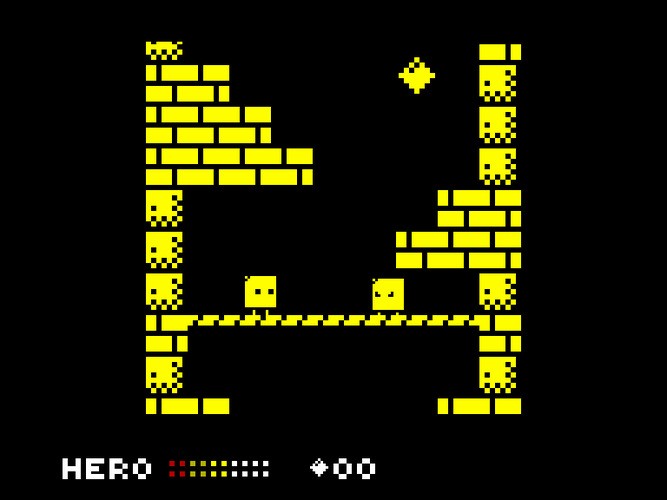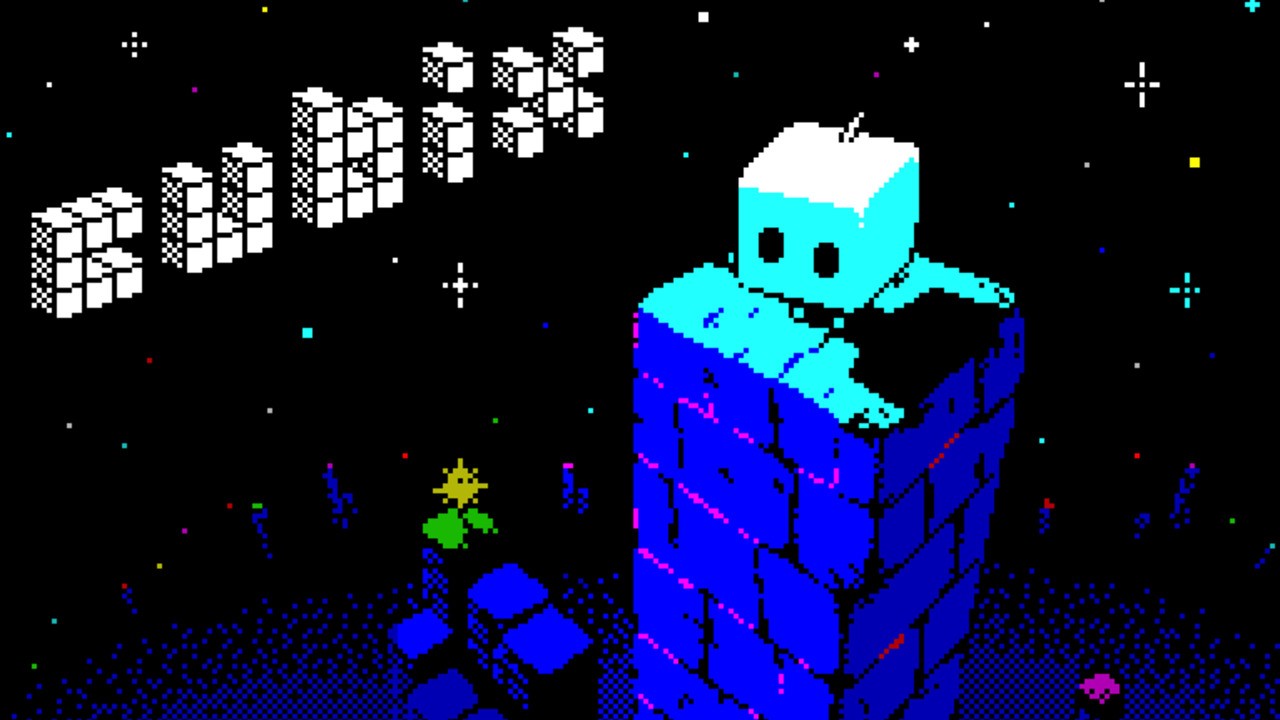Cubix on ZX Spectrum: Pseudo-3D Brilliance or Elaborate Smoke and Mirrors?
Hello everyone. Today we’re talking about Cubix – a so-called “3D platformer” for the ZX Spectrum, a machine that was already sweating from the effort of rendering a pixelated frog crossing a road in the mid-80s. And here we are in 2025 watching a lone developer, Gogin, conjure up rotating towers on 40-year-old hardware as if it’s nothing more than a parlor trick. Retro fans are losing their collective minds – some calling it witchcraft, others screaming conspiracy, and a few trying to dissect frame-by-frame graphics procedures like it’s the Zapruder film.
The Contest and the Madness
So, what triggered this chaos? Well, a retro game development competition. Yes, the ZX Spectrum is now in its prime retirement years sipping soup through a straw, but some people look at that box of rubber keys and think: “You know what this needs? A new game that pretends it’s Fez but can barely draw a sprite without crying for mercy.” And somehow it works. From August 7th to 20th, homebrew heaven unleashed onto gamers’ emulators with Cubix standing out as the alleged “first 3D platformer” on the Spectrum. Bold claim, Gogin. Bold claim. It’s like being the tallest hobbit – technically true, but who cares until you see it in action.
What Even Is Cubix?
You play as Bix, a square little fellow stuck in six towers, collecting talisman pieces broken by Mr. Extra-Edgy-Bad-Guy himself, Lord Hexatron – which sounds less like a video game villain and more like a rejected Decepticon. The game is essentially a puzzle platformer, except you’re navigating a rotating 2D map to trick your brain into thinking it’s 3D. You unlock abilities, fling blocks around, and apparently it’s all deeply technical. If you’re suspicious that the Spectrum might burst into flames trying to handle this nonsense, you’re right – except Gogin decided to pre-calculate literally everything so the CPU is doing as little actual work as possible. Lazy? Efficient? Genius? All of the above.

“Don’t do what you don’t have to do in order to save Z80 clock cycles.” – Gogin
That’s the retro equivalent of a doctor saying: “Don’t stop the patient’s heart if you don’t have to.” Obvious, but somehow revolutionary when you apply it to shoving fake 3D geometry into a ZX Spectrum with 128K of memory.
The “3D” Illusion
This isn’t real 3D. It’s an illusion. The graphics are just flat 2D tiles stacked into three lookup tables like some Frankenstein spreadsheet, each giving enough pre-calculated coordinates to trick you into thinking there’s depth. It’s the gaming equivalent of holding a cardboard cutout at arm’s length and yelling “virtual reality!” Yet, it works. Levels “rotate” by accessing 128 binary angle steps – enough to fool the eye into believing the Spectrum’s doing advanced perspective math when in reality it’s staging the world’s most elaborate smoke-and-mirrors performance.

Technical Trickery
- 128 angle steps to simulate rotation
- Three lookup tables pretending to be magic portals to 3D land
- 70 engine procedures just for rendering tiles and sprites
- Up to 16KB tied up in rendering code – because who needs free memory anyway?
Yes, folks. Seventy different procedures dedicated just to screen output. For comparison, most modern AAA devs can’t be bothered to write one, preferring to patch it 15 times post-release instead. At least when Gogin says it’s finished, it actually runs.
Gameplay vs. Tech Demo
Let’s get one thing clear: technical achievement does not equal good gameplay. You can make Crysis run on a toaster but it doesn’t change the fact that the gameplay could be as stale as month-old bread. And yes, Cubix has that whiff of “tech demo first, game second” syndrome. You’re basically rotating towers and grabbing power-ups. Does it look impressive? Absolutely. Does it redefine gaming? Not even close. But for ZX Spectrum fans, this is their RTX showcase. It’s the DLSS 3.5 of 8-bit machines. Except instead of AI upscaling, it’s pre-baked tables duct-taped together by an assembly wizard.
Community Reactions
“Cute, but I doubt it’ll be that impressive-WITCHCRAFT!!! BURN IT AT THE STAKE!!!”
Yes, people compared it to magic. And that’s actually fair. Others pointed out similarities to games like Solomon’s Key and Nebulus, but Cubix is really about flexing technical muscles. Players aren’t just reviewing a game; they’re reviewing the code itself. Half the joy is in wondering how the ZX isn’t just giving up halfway with a “Syntax Error.”
Doctor’s Orders
As your friendly ranting doctor here, allow me to write out the prescription: Cubix is both miracle medicine and placebo. On the one hand, it gives jaded retro fans a much-needed dopamine hit – “new game on old machine does impossible thing.” On the other hand, you could argue it’s like prescribing a blood transfusion made from soda. It technically works, but don’t ask too many questions about whether this whole 3D claim is just a placebo effect to keep the Spectrum relevant while the rest of the gaming world is trying to get Baldur’s Gate IV running on handhelds.
Final Verdict
Cubix is a miracle of technical ingenuity – a wizardly act of coding dark arts on hardware that really has no business rendering such illusions. Is it revolutionary? No. Is it worth diving into if you love retro gaming? Absolutely. It sits comfortably in that curious intersection where conspiracy theory meets coding brilliance: the line between “clever manipulation” and “how the hell did he do that?”
So, would I recommend it? Yes. But only with the caveat that you should play it for what it is: a brilliant technical showcase, not the second coming of platformer design. Think of it like watching someone speedrun Dark Souls blindfolded with a Guitar Hero controller. It’s less about the gameplay and more about the feat itself. And in that regard, it absolutely succeeds.
Final judgment? Impressive. Silly. Clever. A touch of smoke and mirrors, a dash of wizardry, and ultimately… pretty damn cool for a square little hero on rubber-key hardware.
And that, ladies and gentlemen, is entirely my opinion.

Article Source: Dev Reveals Secrets Behind New “3D” Platformer for the ZX Spectrum, https://www.timeextension.com/news/2025/08/dev-reveals-secrets-behind-stunning-new-3d-platformer-for-the-zx-spectrum


